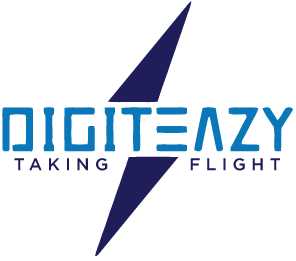In this digital age, businesses have many options for marketing, including organic and paid marketing. They can go for organic marketing, where they rely on word-of-mouth and viral content to spread their message, or they can choose to go for paid marketing, where they advertise and promote their product/service through various platforms. The choice depends on what they want to achieve and who they want to target. Understanding each approach’s unique strengths and considerations is essential to develop a comprehensive and impactful marketing strategy.
Organic Marketing:
Organic marketing, as the name implies, centers around leveraging unpaid tactics to attract and engage an audience. It includes creating valuable content, optimizing your website for search engines like Google, and leveraging the power of social media like Facebook and Instagram. These channels help you reach your targeted audience and boost your online visibility. The primary channels for organic marketing include SEO, Social Media Marketing, and Content Marketing.
SEO (Search Engine Optimization):
- SEO involves optimizing website content and layout structure to rank higher in search results. This approach helps potential customers find and engage with your business more efficiently. While the results take time, it enables you to achieve higher visibility and credibility.
Content Marketing:
- Content Marketing involves planning, creating, and sharing valuable, engaging, and informative content tailored to a targeted audience. By consistently delivering high-quality content, businesses can establish authority, foster relationships, and attract organic traffic over time.
Social Media Marketing:
- Building a solid online presence involves interacting with followers and fostering community on relevant social media platforms. Organic engagement on these platforms contributes to brand awareness and trust, creating a foundation for sustained growth.
Paid Marketing:
Paid marketing is a strategy that involves investing in advertising platforms to promote products or services directly. Unlike organic marketing, which relies on creating content and optimizing it for search engines, paid marketing uses a more direct approach that catalyzes rapidly boosting visibility and reach. The primary channels for paid marketing include Pay-Per-Click (PPC), social media advertising, and display advertising.
Pay-Per-Click (PPC) Advertising:
- PPC advertising displays ads on search engines and social media platforms, charging a fee each time a user clicks on the ad. This approach provides quick visibility and immediate results, making it the right choice for businesses seeking rapid growth.
Social Media Advertising:
- Targeting ads to specific demographics, interests, and behaviors on social media platforms ensures marketing messages reach the right people. This precision in targeting contributes to effective lead generation and sales.
Display Advertising:
- Placing banner ads on websites, blogs, and apps frequented by the target audience increases brand awareness and recall. Display advertising is a visual and impactful way to capture attention and drive engagement.
Comparing Organic vs. Paid Marketing
To fully understand the differences between these approaches, we need to examine them closely. Let’s look at their critical aspects to understand their nuances comprehensively.
Cost:
- Organic: Initially free, but requires ongoing effort.
- Paid: Involves upfront costs, with variations based on platforms and targeting.
Speed of Results:
- Organic: It takes longer to see results as it involves building organic traffic.
- Paid: Provides quicker results, as ads are displayed immediately upon campaign launch.
Target Audience:
- Organic: Broad reach, targeting based on content and social media presence.
- Paid: Highly targeted reach based on specific demographics, interests, and behaviors.
Control:
- Organic: More control over content and messaging.
- Paid: Less control over ad placement and audience targeting.
Sustainability:
- Organic: Offers long-term benefits as organic traffic grows over time.
- Paid: Limited to the duration of ad campaigns.
Choosing the Right Path for Your Business:
The decision to use organic or paid marketing depends on business goals, budget, and timelines. Organic marketing may be preferred for businesses with long-term goals and limited budgets. It allows for gradually building brand awareness and credibility, leading to sustainable growth over time.
On the other hand, paid marketing is a powerful tool for those seeking immediate and precise targeting. It delivers quick visibility and reach, enabling businesses to generate leads and drive sales rapidly. The choice ultimately depends on aligning marketing strategies with specific goals and available resources.
Combining Organic and Paid Marketing:
While organic and paid marketing can be effective in isolation, their true power lies in their synergy. Combining these approaches allows businesses to leverage the unique strengths of each, creating a comprehensive and impactful marketing strategy.
Organic marketing can provide the foundational support for paid campaigns, ensuring that a relevant audience with existing brand awareness sees the ads. Simultaneously, paid marketing can accelerate the growth of organic efforts, boosting website traffic and social media engagement.
Conclusion:
Businesses must be aware of changing consumer behaviors and technology advancements and adapt their marketing strategies accordingly. Understanding the differences and strengths of organic and paid marketing is essential for making informed decisions that drive sustainable growth.
To successfully navigate the digital landscape, businesses must carefully assess their needs, goals, and available resources. By experimenting with organic and paid marketing approaches, they can comprehensively understand what works best for their industry. As businesses continue to grow and evolve, it becomes increasingly important to integrate both organic and paid marketing to achieve sustained success in the highly competitive online space.

